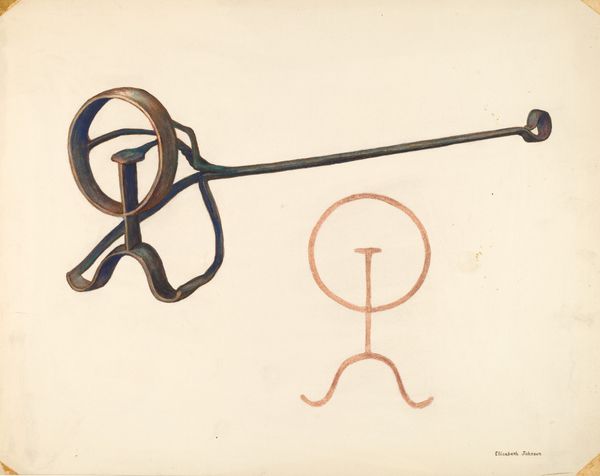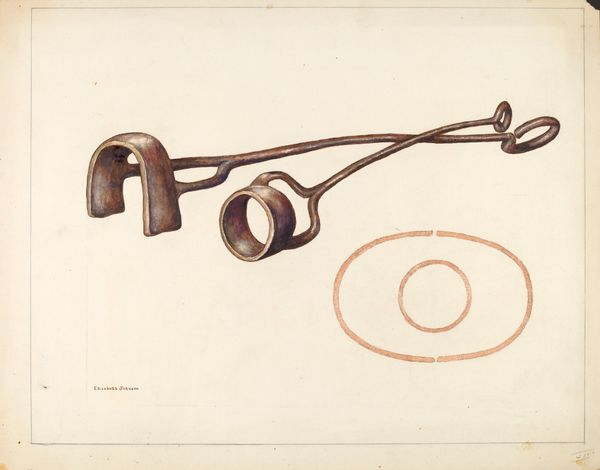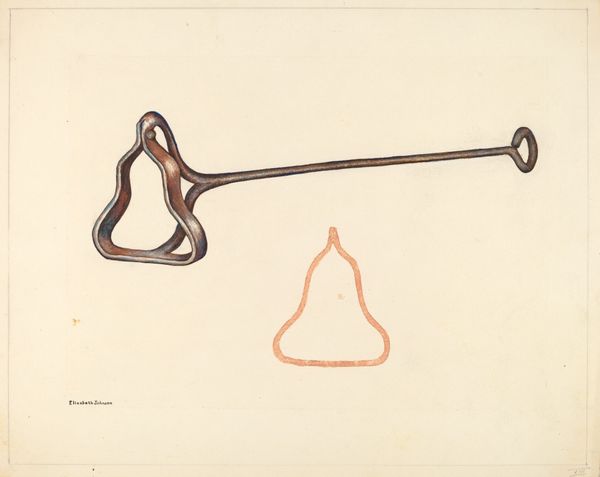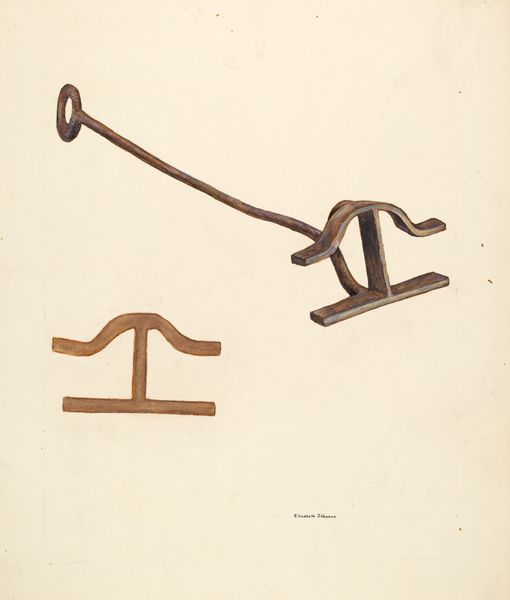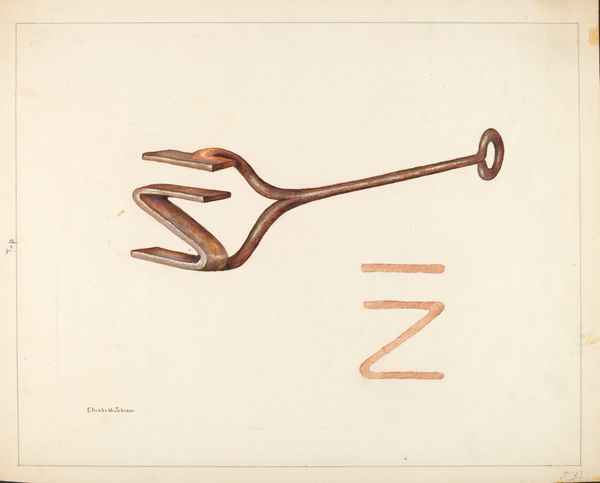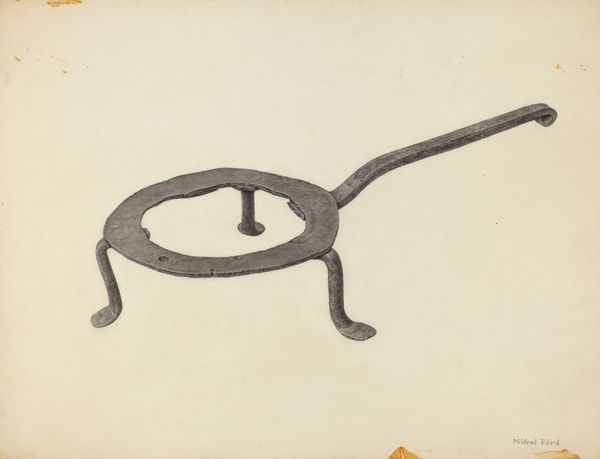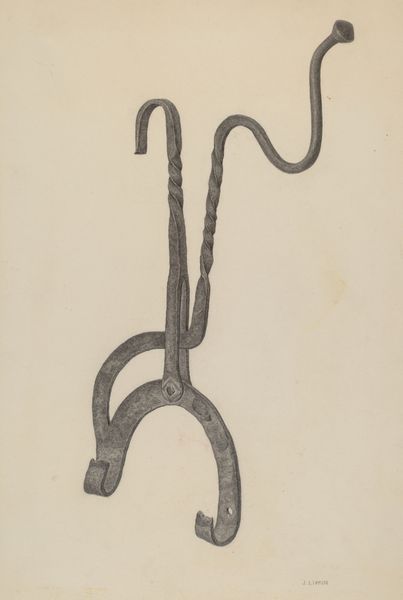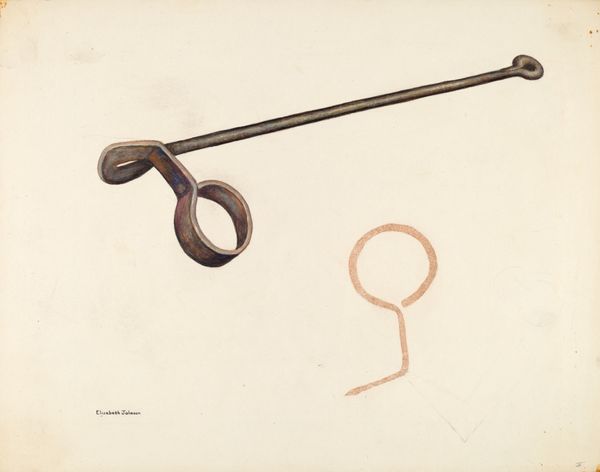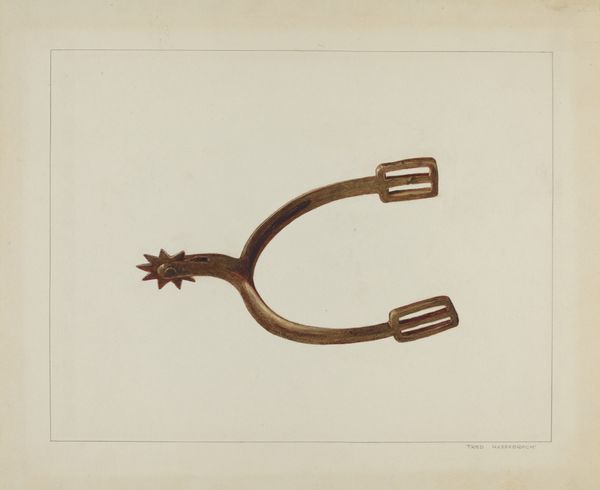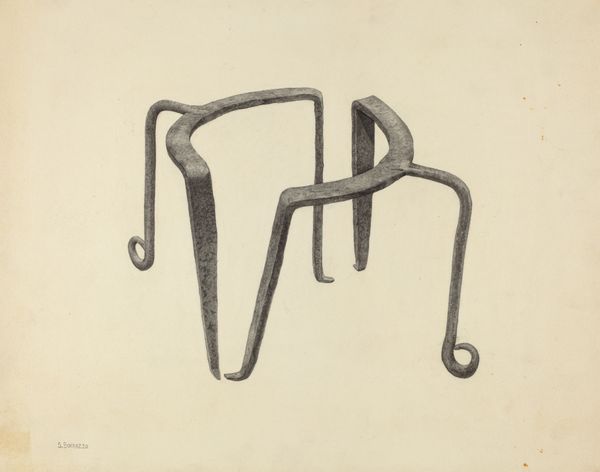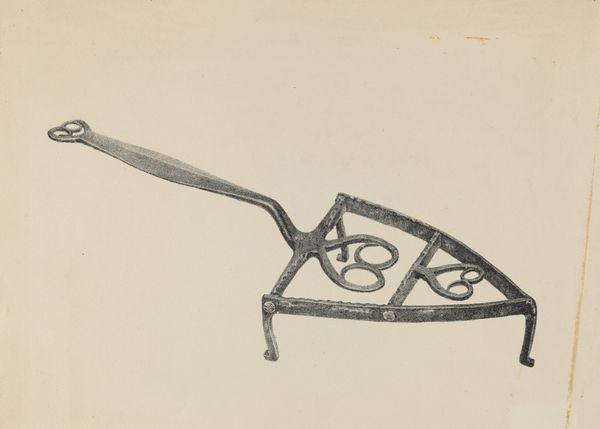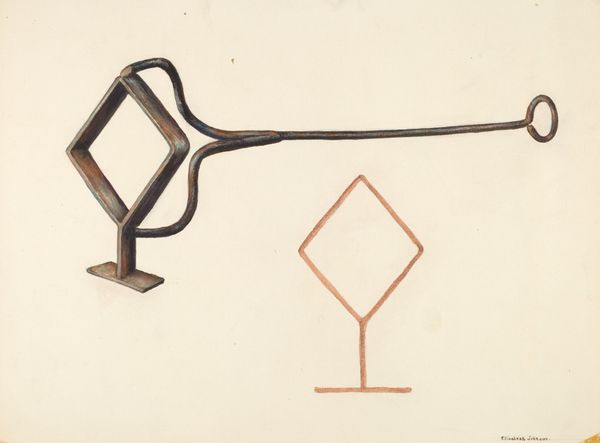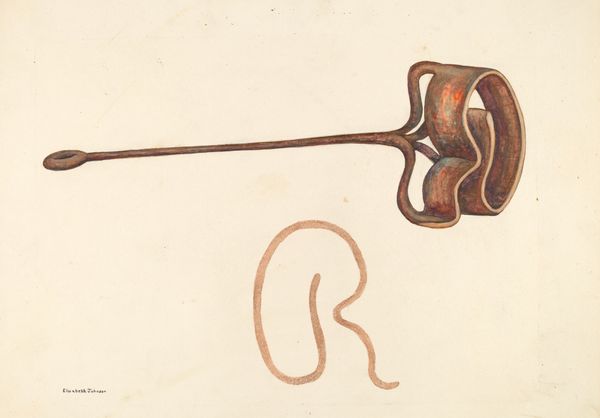
drawing
#
drawing
#
watercolour illustration
#
watercolor
#
realism
Dimensions: overall: 28.8 x 36.7 cm (11 5/16 x 14 7/16 in.) Original IAD Object: 34" long
Copyright: National Gallery of Art: CC0 1.0
Curator: Let's discuss Elizabeth Johnson's "Branding Iron," a watercolor illustration dating to about 1942. My first thought is how stark the image feels, especially given the inherent violence implied by the object itself. Editor: Yes, that contrast strikes me immediately as well. The composition, so sparse and meticulously rendered, removes all the visceral context we'd normally associate with ranching or livestock. The watercolor medium softens it slightly, yet it amplifies the iron’s shape, a semiotic system for property and control. Curator: Absolutely. Johnson's technique, favoring realism, allows us to appreciate the form—the loop at the handle, the precise curves of the branding end. Note how she uses a second, lighter rendering to highlight what the branding leaves behind. This abstraction underscores the tool’s very function. Editor: I see it echoing concepts around identity and ownership during that period, particularly concerning land and animals in the American West. The branding iron is less a pastoral emblem and more a symbolic manifestation of power structures and labor divisions during WWII, maybe reflecting upon displaced communities even within America's own boundaries. Curator: True, it presents us with layers to consider. From a formalist view, the minimalist backdrop emphasizes the intrinsic nature of the instrument itself. But considering your perspective, there is definitely an argument about the social impact embedded in such a basic tool. Editor: It encourages us to see the "branding" as more than just the act of marking cattle. It also invokes notions of branding people – as in defining and controlling entire social groups and erasing individualism. This piece might encourage reflection on the impact of the Second World War on domestic social power relations and control. Curator: It's interesting to me how this relatively simple image sparks discussion on its form, function and impact so vividly. Thank you. Editor: My pleasure. Examining seemingly uncomplicated imagery through lenses like Johnson’s reveals profound insights.
Comments
No comments
Be the first to comment and join the conversation on the ultimate creative platform.
